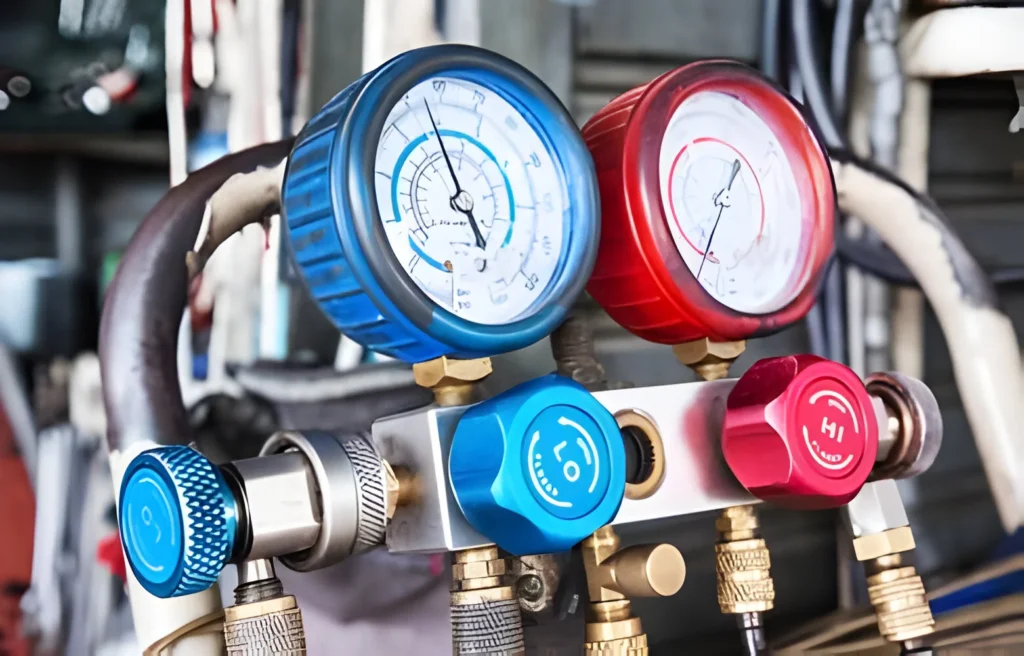R134a refrigerant, scientifically known as Tetrafluoroethane (CF3CH2F), stands at the forefront of refrigerants used across various cooling applications, from automotive air conditioning to commercial refrigeration.

Historical Development and Use in Industry
The story of R134a is a testament to the evolution of refrigerants over the years. Developed as a replacement for R12, R134a was introduced in the 1990s amidst growing concerns over ozone depletion. Its adoption marked a pivotal shift in how industries approach environmental sustainability.
Physical and Chemical Properties
R134a’s physical and chemical properties make it an ideal candidate for cooling systems. It operates under moderate pressure, boasts a low boiling point, and, crucially, exhibits minimal toxicity and flammability, aligning with safety standards across industries.
The Role of R134a Refrigerant in Modern Cooling Systems

Application in Automotive Air Conditioning
In the realm of automotive air conditioning, R134a has been the refrigerant of choice, providing effective cooling with a reduced environmental footprint.
Use in Commercial and Residential HVAC Systems
R134a’s versatility extends to heating, ventilation, and air conditioning (HVAC) systems in homes and commercial buildings. Its efficiency in transferring heat and compatibility with existing technologies underscores its widespread adoption.
Importance in Refrigeration
The refrigeration sector relies on R134a for its ability to maintain low temperatures reliably and safely. From supermarket display cases to medical refrigeration, R134a plays a critical role in various applications.
Environmental Impact
Global Warming Potential (GWP) and Ozone Depletion
While R134a represents an improvement over older refrigerants in terms of ozone depletion its global warming potential remains a concern. The environmental impact of R134a has prompted global efforts to find and implement alternatives with lower GWP.
Regulatory Measures and Phasing Out Plans
Governments and environmental organizations worldwide have instituted measures to phase out high-GWP refrigerants like R134a. These regulatory frameworks aim to steer the industry towards more sustainable practices and substances.
Alternatives and Future Directions
The search for alternatives to R134a has intensified, focusing on substances that offer environmental benefits without compromising performance. The future of refrigerants lies in the balance between technological advancement and ecological responsibility.
Technical Insights
How R134a Refrigerant Works in a Cooling System
R134a operates by absorbing and releasing heat through phase changes, a process central to refrigeration and air conditioning systems.
Safety Measures and Handling Procedures
Despite its low toxicity, handling R134a requires adherence to safety protocols to prevent exposure and environmental release. Proper training and equipment are essential for those working with this and any refrigerant.
Comparative Analysis with Other Refrigerants
Comparing R134a to other refrigerants highlights its advantages and limitations. This analysis is crucial for industries and policymakers as they navigate the transition to more sustainable cooling solutions.
Economic and Regulatory Landscape
The market dynamics of R134a are influenced by regulatory changes and the push for sustainability. Understanding these factors is vital for stakeholders across the refrigeration and air conditioning sectors.
R134a Refrigerant and the Future of Refrigeration
As the industry evolves, the role of R134a is being reevaluated in the context of environmental sustainability and technological innovation. The future of refrigeration is likely to be characterized by a shift towards alternatives that balance performance with ecological considerations.
